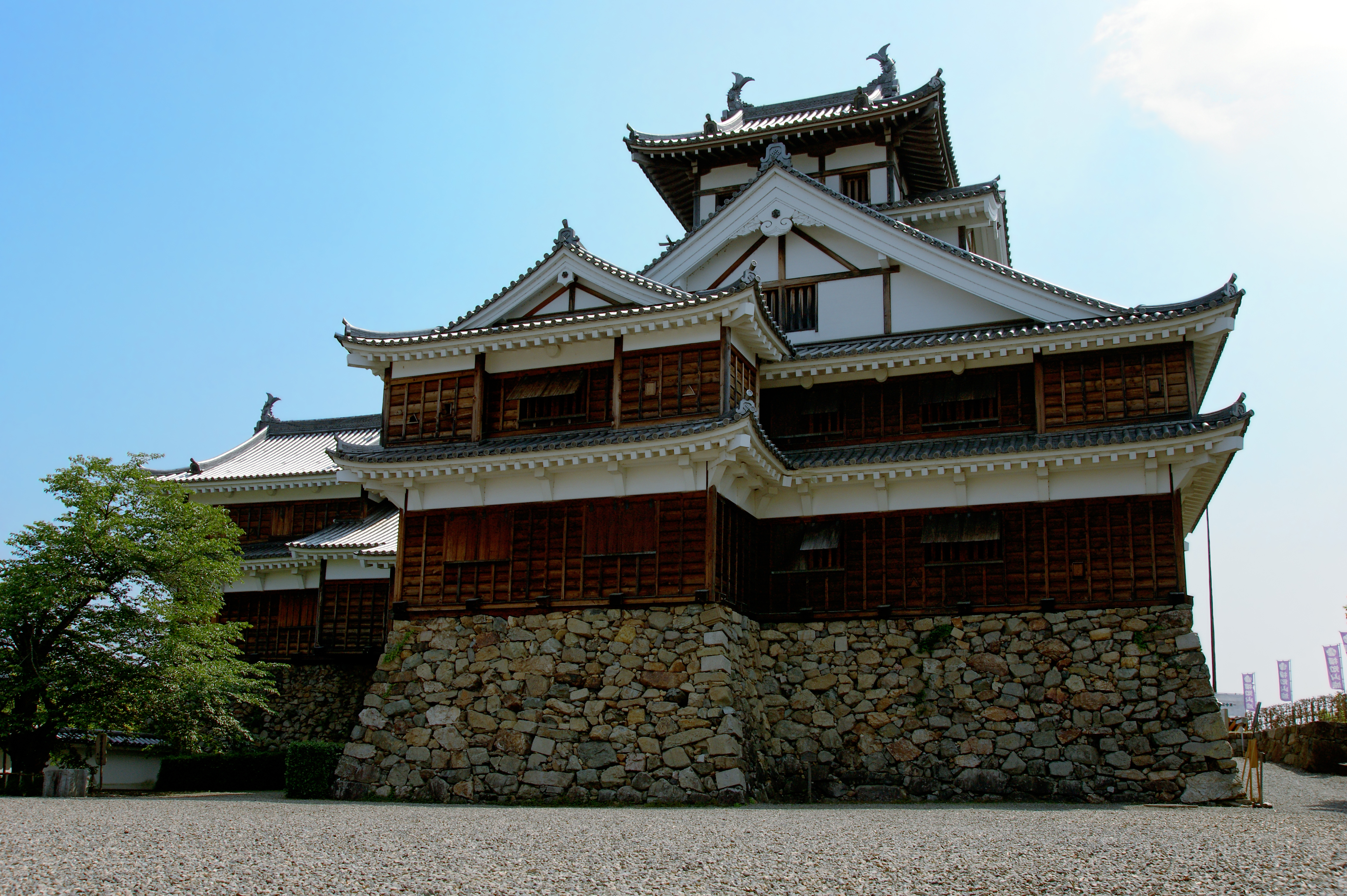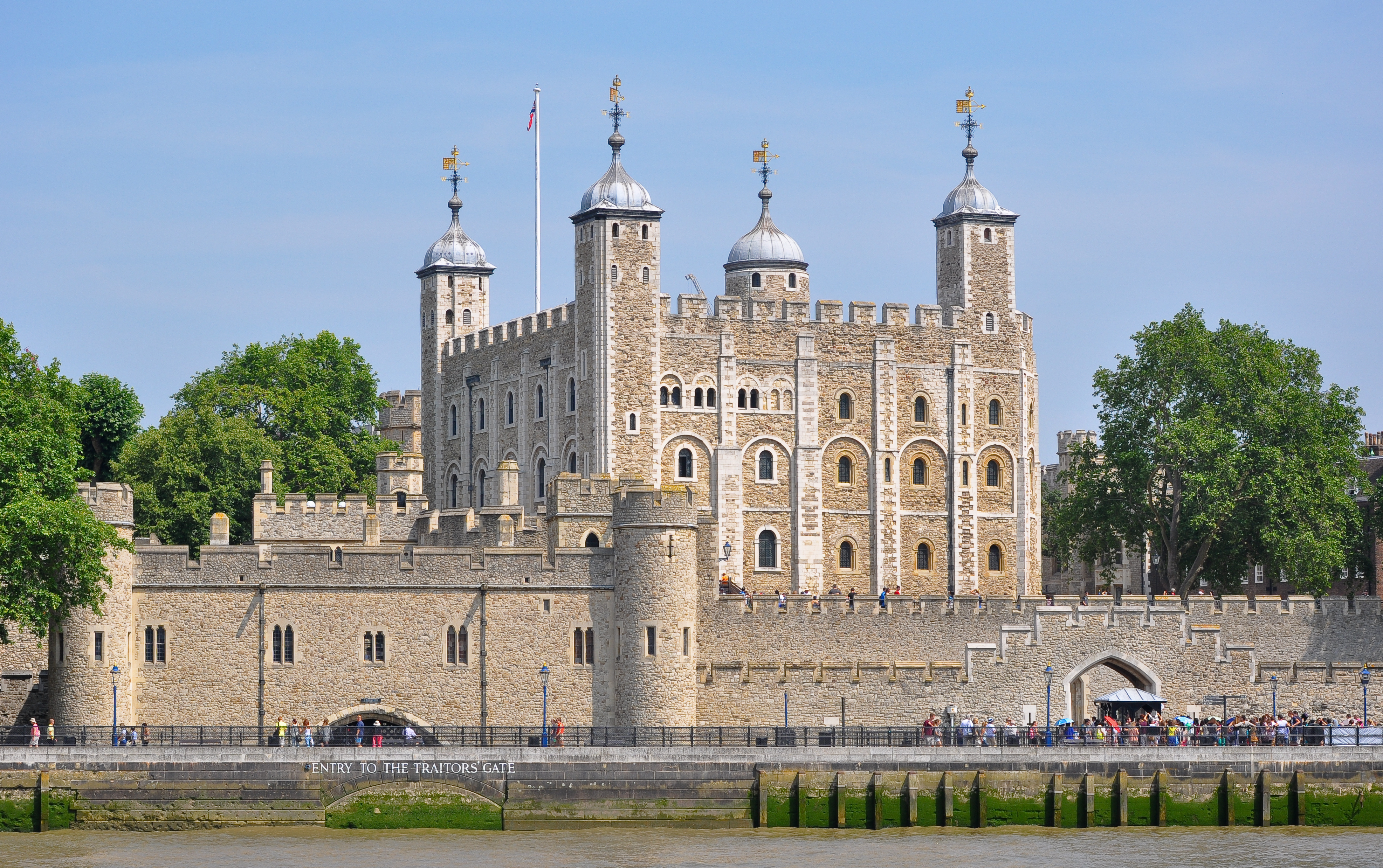|
KŇćnomine Castle
is a castle structure in Yamaguchi, Japan. It is located on a 338 meter mountain. History KŇćnomine Castle was built in 1556 by ŇĆuchi Yoshinaga as a supporting castle of ŇĆuchi-shi Yakata, but MŇćri Motonari was a prominent ''daimyŇć'' (feudal lord) in the western ChŇęgoku region of Japan during the Sengoku period of the 16th century. The MŇćri clan claimed descent from ŇĆe no Hiromoto (Ś§ßśĪüŚļÉŚÖÉ), an adviser to Minamoto no Yoritomo. Motonar ...`s army advanced to SuŇć Province, ŇĆuchi Yoshinaga left ŇĆuchi-shi Yakata and KŇćnomine Castle without resistance. In 1638, KŇćnomine castle was abandoned. The castle was listed as one of the Continued Top 100 Japanese Castles in 2017. Current The castle is now only ruins, with some stone walls and moats left intact. Literature * References {{coord missing, Yamaguchi Prefecture Castles in Yamaguchi Prefecture Historic Sites of Japan Former castles in Japan Ruined castles in Japan 1550s establishments i ... [...More Info...] [...Related Items...] OR: [Wikipedia] [Google] [Baidu] |
Yamaguchi (city)
is the capital city of Yamaguchi Prefecture, Japan. The city was founded on April 10, 1929. As of February 1, 2010, the city had an estimated population of 198,971 and a population density of 194.44 persons per km¬≤. The total area is 1,023.31 km¬≤. Yamaguchi is home to the Buddhist temple, , with its five-story pagoda. Yamaguchi is served by Yamaguchi Ube Airport in nearby Ube. History Merger history *April 1, 1889: 40 towns were merged to form the town of Yamaguchi. *April 1, 1905: The village of Kami-unorei was merged into the town of Yamaguchi. *July 1, 1915: The village of Shimo-unorei was merged into the town of Yamaguchi. *April 10, 1929: The town of Yamaguchi absorbed the village of Yoshiki to create the city of Yamaguchi (1st Generation). *April 1, 1941: The village of Miyano was merged into the city of Yamaguchi. *April 1, 1944: The towns of OgŇćri and Ajisu, and the villages of Hirakawa, ŇĆtoshi, Sue, Natajima, Aiofutajima, Kagawa and Sayama were merged with ... [...More Info...] [...Related Items...] OR: [Wikipedia] [Google] [Baidu] |
Continued Top 100 Japanese Castles
The is a list of 100 castles, intended as a sequel of 100 Fine Castles of Japan The castles in were chosen based on their significance in culture, history, and in their regions by the in 2006. In 2017, Japanese Castle Association created an additional finest 100 castles list as Continued Top 100 Japanese Castles. HokkaidŇć .... The castles were chosen for their significance in culture, history, and in their regions by the in 2017. HokkaidŇć region TŇćhoku region KantŇć region KŇćshin'etsu region Hokuriku region TŇćkai region Kansai region ChŇęgoku region Shikoku region KyŇęshŇę region Okinawa region See also * List of castles in Japan * List of National Treasures of Japan (castles) Notes External linksJapan Castle Foundation {{Continued Top 100 Japanese Castles * Lists of castles in Japan ... [...More Info...] [...Related Items...] OR: [Wikipedia] [Google] [Baidu] |
Ruined Castles In Japan
Ruins () are the remains of a civilization's architecture. The term refers to formerly intact structures that have fallen into a state of partial or total disrepair over time due to a variety of factors, such as lack of maintenance, deliberate destruction by humans, or uncontrollable destruction by natural phenomena. The most common root causes that yield ruins in their wake are natural disasters, armed conflict, and population decline, with many structures becoming progressively derelict over time due to long-term weathering and scavenging. There are famous ruins all over the world, with notable sites originating from ancient China, the Indus Valley and other regions of ancient India, ancient Iran, ancient Israel and Judea, ancient Iraq, ancient Greece, ancient Egypt, Roman sites throughout the Mediterranean Basin, and Incan and Mayan sites in the Americas. Ruins are of great importance to historians, archaeologists and anthropologists, whether they were once individual f ... [...More Info...] [...Related Items...] OR: [Wikipedia] [Google] [Baidu] |
Former Castles In Japan
A former is an object, such as a template, gauge or cutting die, which is used to form something such as a boat's hull. Typically, a former gives shape to a structure that may have complex curvature. A former may become an integral part of the finished structure, as in an aircraft fuselage, or it may be removable, being using in the construction process and then discarded or re-used. Aircraft formers Formers are used in the construction of aircraft fuselage, of which a typical fuselage has a series from the nose to the empennage, typically perpendicular to the longitudinal axis of the aircraft. The primary purpose of formers is to establish the shape of the fuselage and reduce the column length of stringers to prevent instability. Formers are typically attached to longerons, which support the skin of the aircraft. The "former-and-longeron" technique (also called stations and stringers) was adopted from boat construction, and was typical of light aircraft built until ... [...More Info...] [...Related Items...] OR: [Wikipedia] [Google] [Baidu] |
Historic Sites Of Japan
is a collective term used by the Japanese government's Law for the Protection of Cultural Properties to denote Cultural Properties of JapanIn this article, capitals indicate an official designation as opposed to a simple definition, e.g "Cultural Properties" as opposed to "cultural properties". as historic locations such as shell mounds, ancient tombs, sites of palaces, sites of forts or castles, monumental dwelling houses and other sites of high historical or scientific value; gardens, bridges, gorges, mountains, and other places of great scenic beauty; and natural features such as animals, plants, and geological or mineral formations of high scientific value. Designated monuments of Japan The government ''designates'' (as opposed to '' registers'') "significant" items of this kind as Cultural Properties (śĖáŚĆĖŤ≤° ''bunkazai'') and classifies them in one of three categories: * * , * . Items of particularly high significance may receive a higher classification as: * * * ... [...More Info...] [...Related Items...] OR: [Wikipedia] [Google] [Baidu] |
Castles In Yamaguchi Prefecture
A castle is a type of fortified structure built during the Middle Ages predominantly by the nobility or royalty and by military orders. Scholars debate the scope of the word ''castle'', but usually consider it to be the private fortified residence of a lord or noble. This is distinct from a palace, which is not fortified; from a fortress, which was not always a residence for royalty or nobility; from a ''pleasance'' which was a walled-in residence for nobility, but not adequately fortified; and from a fortified settlement, which was a public defence ‚Äď though there are many similarities among these types of construction. Use of the term has varied over time and has also been applied to structures such as hill forts and 19th-20th century homes built to resemble castles. Over the approximately 900 years when genuine castles were built, they took on a great many forms with many different features, although some, such as curtain walls, arrowslits, and portcullises, were ... [...More Info...] [...Related Items...] OR: [Wikipedia] [Google] [Baidu] |
Yamaguchi Kounomine Castle01
Yamaguchi may refer to: People *Yamaguchi (surname), the 14th most popular Japanese surname. Places *Yamaguchi Prefecture, the westernmost prefecture of HonshŇę island of Japan **Yamaguchi (city), capital of Yamaguchi Prefecture *** Yamaguchi Station (Yamaguchi), a JR West railway station, located in the center of Yamaguchi-shi *** Shin-Yamaguchi Station, a railway station in Yamaguchi-shi (SanyŇć Shinkansen line) * Yamaguchi, Nagano, a village in Nagano Prefecture Fiction *Kumiko "Yankumi" Yamaguchi, the character played by Yukie Nakama in ''Gokusen'', a Japanese TV show *Yamaguchi-sensei, a doctor in the manga/anime series '' Fighting Spirit'' *U.S.S. ''Yamaguchi'', an ''Ambassador Class'' Federation starship in the ''Star Trek'' franchise *Yamaguchi Digital Pets, a fictional digital pets company mentioned in ''Fanboy & Chum Chum'' *Yamaguchi Tadashi, a member of the Karasuno volleyball club in the manga/anime series ''Haikyu!!'' People * Kristi Yamaguchi, American figure skat ... [...More Info...] [...Related Items...] OR: [Wikipedia] [Google] [Baidu] |
SuŇć Province
was a province of Japan in the area that is today the eastern part of Yamaguchi Prefecture. It was sometimes called . SuŇć bordered on Aki, Iwami, and Nagato Provinces. The ancient provincial capital was in HŇćfu. SuŇć was ruled for much of the Muromachi period by the ŇĆuchi clan, who built a castle at Yamaguchi. In the Sengoku period it was conquered by the MŇćri clan, and was ruled remotely by them for much of the Edo period. Shrines and temples '' Tamanoya jinja'' was the chief Shinto shrine ('' ichinomiya'') of SuŇć. retrieved 2012-11-20. Historical districts * |
Japan
Japan ( ja, śó•śú¨, or , and formally , ''Nihonkoku'') is an island country in East Asia. It is situated in the northwest Pacific Ocean, and is bordered on the west by the Sea of Japan, while extending from the Sea of Okhotsk in the north toward the East China Sea, Philippine Sea, and Taiwan in the south. Japan is a part of the Ring of Fire, and spans an archipelago of 6852 islands covering ; the five main islands are Hokkaido, Honshu (the "mainland"), Shikoku, Kyushu, and Okinawa. Tokyo is the nation's capital and largest city, followed by Yokohama, Osaka, Nagoya, Sapporo, Fukuoka, Kobe, and Kyoto. Japan is the eleventh most populous country in the world, as well as one of the most densely populated and urbanized. About three-fourths of the country's terrain is mountainous, concentrating its population of 123.2 million on narrow coastal plains. Japan is divided into 47 administrative prefectures and eight traditional regions. The Greater Tokyo Ar ... [...More Info...] [...Related Items...] OR: [Wikipedia] [Google] [Baidu] |
MŇćri Motonari
was a prominent ''daimyŇć'' (feudal lord) in the western ChŇęgoku region of Japan during the Sengoku period of the 16th century. The MŇćri clan claimed descent from ŇĆe no Hiromoto (Ś§ßśĪüŚļÉŚÖÉ), an adviser to Minamoto no Yoritomo. Motonari was called the "Beggar Prince". He was known as a great strategist who began as a small local warlord ('' jizamurai'') of Aki Province and extended his clan's power to nearly all of the ChŇęgoku region through war, marriage, adoption and assassination. Sandwiched between the powerful Amago and ŇĆuchi clans, Motonari led his clan by carefully balancing actions and diplomacy. Eventually, Motonari succeeded in defeating both and controlled the entire ChŇęgoku region. In his later years, he crushed the ŇĆtomo clan of Bungo Province in KyŇęshŇę. Motonari ruled from Yoshida-KŇćriyama Castle, the clan's main bastion since the early 14th century. His descendants became lords of the ChŇćshŇę Domain. Early life MŇćri Motonari was born on Ap ... [...More Info...] [...Related Items...] OR: [Wikipedia] [Google] [Baidu] |
ŇĆuchi-shi Yakata
was the fortified residence of the ŇĆuchi clan in Yamaguchi, Japan. ŇĆuchi-shi Yakata has been designated as a National Historic Sites along with RyŇćun-ji temple. It was a base of the ŇĆuchi clan who were feudal lords and thrived during the Muromachi period to Sengoku period. Its ruins have been protected as a nationally designated historic site. In 1556, ŇĆuchi Yoshinaga built KŇćnomine Castle as a supporting castle of ŇĆuchi-shi Yakata because ŇĆuchi-shi Yakata was considered unsuitable for withstanding a siege. but MŇćri Motonari`s army advanced to SuŇć Province, ŇĆuchi Yoshinaga left ŇĆuchi-shi Yakata and KŇćnomine Castle without resistance. The castle was listed as one of the Continued Top 100 Japanese Castles The is a list of 100 castles, intended as a sequel of 100 Fine Castles of Japan The castles in were chosen based on their significance in culture, history, and in their regions by the in 2006. In 2017, Japanese Castle Association created an ad ... in 2017. ... [...More Info...] [...Related Items...] OR: [Wikipedia] [Google] [Baidu] |






